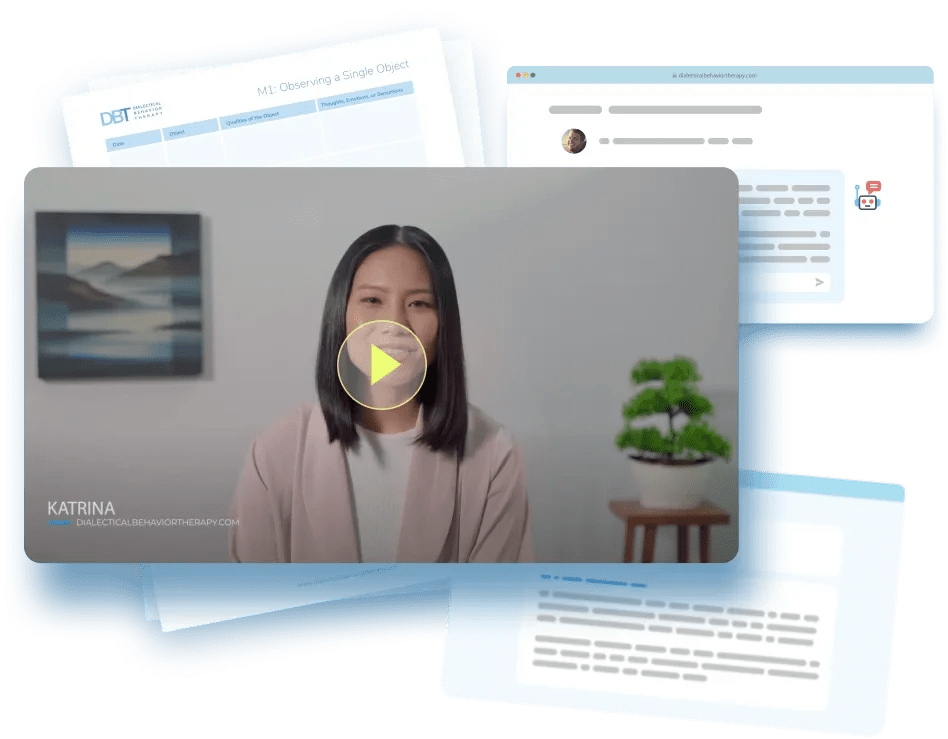OU6 Passengers on the Bus
Virtual Coach
Work step-by-step through the Open Up exercise with the virtual coach.
Introduction
Our minds love to back‑seat‑drive—shouting warnings, criticisms, and reroutes that yank us off course. Passengers on the Bus turns that noise into a concrete scene: you’re the driver, thoughts and feelings are riders. They can chatter, but they don’t touch the wheel. ACT research shows that visualising internal events as passengers builds self‑as‑context—the observing self that chooses direction even when the bus gets rowdy.
Instructions
Goal: Run this imagery once per day for a week, then any time inner voices try to hijack decisions.
Steps
-
Start the Engine
- What it means: Sit upright, close eyes, picture the driver’s seat, hands on the wheel, engine idling. Name your next values stop (e.g., “Inspire the team at 3 p.m. meeting”).
- Concrete example (“Fear of public speaking”): Value: Contribution → next stop = “Team Inspiration Station.”
- Quick tip: Saying it aloud locks intention.
-
Open the Door
- What it means: Invite any thought, memory, or feeling to board as a passenger. See them take seats—front row, back row, aisles.
- Concrete example (“Fear of public speaking”): Passengers board labelled “What if you freeze?”, “Racing heartbeat,” “Self-doubt.”
- Quick tip: Let them look however they want—cartoon, shadow, relative.
-
Thank the Riders
- What it means: Silently say, “Thanks for showing up.” Acknowledge each one without debate.
- Concrete example (“Fear of public speaking”): “Thanks, Self-doubt, noted.”
- Quick tip: A micro-bow or nod reinforces respect without surrender.
-
Check the Wheel
- What it means: Notice your hands—still on the wheel? Feel seat beneath you, pedals under feet. Re-anchor in driver’s role.
- Concrete example (“Fear of public speaking”): Grips wheel, feet poised; passengers chatter, but direction is yours.
- Quick tip: Squeeze wheel on inhale, relax grip on exhale to embody control.
-
Drive On
- What it means: Put the bus in gear, pull onto the road toward your named stop. Hear passenger comments fade into background engine hum.
- Concrete example (“Fear of public speaking”): Drive through “Meeting Street” even as “Heart-pound” passenger mutters.
- Quick tip: Pair motion with slow breaths: in on accelerate, out on cruise.
-
Arrive & Open Doors
- What it means: Imagine doors opening at your value stop. Some riders exit, others stay, new ones board. That’s okay—you’ll keep driving.
- Concrete example (“Fear of public speaking”): Deliver presentation; fear disembarks, pride boards.
- Quick tip: Reflect: “Which riders were loudest? How did steering anyway feel?”
Worksheet & Virtual Coach
FAQ's
Passengers yell louder when I ignore them—am I doing it wrong?
Loud equals noticed. Keep driving; volume often drops once they realise you’re not handing over the wheel.
What if a passenger tries to grab the steering wheel?
Visualise a gentle hand gesture: “Back to your seat, please.” Acknowledge, thank, refocus on the road.
Can I kick passengers off the bus?
You can’t stop thoughts from boarding. The skill is steering anyway. Sometimes riders hop off naturally when they’re no longer in charge.
Does it have to be a bus?
No—try train engineer, ship captain, rideshare driver. Any vehicle where you steer works.
How long till I feel control?
Many feel a shift after a single run; deeper habit forms with daily practice for two weeks. Track your control‑sense scores to see progress.
Disclaimer
If you have any behavioral health questions or concerns, please talk to your healthcare or mental health care provider. This article is supported by peer-reviewed research and information drawn from behavioral health societies and governmental agencies. However, it is not a substitute for professional behavioral health advice, diagnosis, or treatment.

